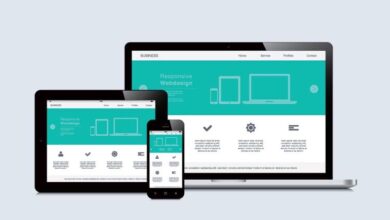
How Seniors Can Get Internet for Less Than $15 a Month
In today’s digital world, internet access is more essential than ever, especially for seniors who want to stay connected with family, friends, and essential services. The good news is that even on a limited budget, seniors can secure internet access at home for less than $15 a month. Understanding how to access affordable internet is crucial, as it can greatly enhance seniors’ quality of life and ensure their inclusion in an increasingly digital society.
The Importance of Affordable Internet for Seniors
As technology continues to evolve, the importance of internet access only increases, especially for seniors. The internet offers an array of benefits, including access to health information, social connections, and entertainment. For seniors, many of whom face physical limitations, the internet can be an invaluable tool for maintaining independence and staying engaged with the world.
Staying connected online allows seniors to interact with family members and participate in virtual communities, helping reduce isolation and loneliness. Additionally, internet access enables seniors to complete daily tasks more easily, such as grocery shopping, scheduling medical appointments, and managing finances, all of which can be done without leaving home. Online healthcare services, including telemedicine, are also crucial, allowing seniors to receive medical attention without the need to travel.
However, the high cost of internet plans can be a significant barrier for seniors on fixed incomes. Fortunately, there are a variety of ways to obtain affordable internet without sacrificing quality. Through government programs and internet service provider initiatives, seniors can find options to connect affordably.
Government Initiatives and Programs
A primary source of affordable internet for seniors is the federal Lifeline program, which offers discounts on telecommunications services for low-income consumers, including seniors. The Lifeline program provides a discount of up to $9.25 per month for eligible individuals, which can significantly reduce the monthly cost of internet access.
To qualify for the Lifeline program, seniors must meet specific income requirements or be enrolled in federal assistance programs like Medicaid or Supplemental Security Income (SSI). In addition to providing financial relief, this program ensures that seniors remain part of the digital world—a critical factor, especially in emergencies where vital information is often disseminated online.
The federal government has also worked with state agencies to improve access to affordable internet services. These state-level collaborations help address the unique needs of different communities, making it easier for seniors to access internet services even if they live in rural or underserved areas. Understanding how to navigate these programs can significantly lower the cost of internet service for seniors.
Low-Cost Internet Options for Seniors
Many internet service providers have developed budget-friendly internet plans specifically designed for seniors or low-income households. Here are some of the best options:
- Xfinity Wifi Pass: For just $10, seniors can access unlimited high-speed data for 30 days, with no long-term commitment required. This plan works only if you live near one of Xfinity’s many hotspots, providing flexibility for those who may not need home internet but require reliable access in specific locations.
- Xfinity Internet Essentials: This program offers affordable internet for about $14.95 a month. It is available to eligible households, including seniors who meet the qualifications. In addition to affordable pricing, Xfinity includes digital literacy training to help seniors maximize the benefits of their internet connection.
- Xtream Connect by Mediacom: Offering unlimited internet for $14.95 a month, Xtream Connect doesn’t require deposits or installation fees, making it an excellent option for seniors who need a simple, no-frills plan. Additionally, seniors can add a home phone service for just $5 a month more.
- Verizon: Verizon’s Verizon Forward program provides internet service for just $20 per month for qualifying seniors. This plan offers a high-quality connection while keeping costs low for those in need.
$15 Internet Plans (55+)
In response to the growing demand for affordable internet, several providers now offer special plans for seniors aged 55 and older. These plans often include perks that are not available in standard internet packages, such as waived installation fees, free modems, and customer service tailored to meet the needs of older users.
Seniors who are specifically looking for internet plans under $15 will find several providers offering such options. These plans are often flexible, with no long-term commitments or contracts required, allowing seniors to stay connected without being tied down by complicated terms. In some cases, these plans come with simple online security features to protect seniors from common cyber threats, such as phishing and scams.
Furthermore, many providers offer dedicated help desks to assist senior users with tech-related questions, providing additional peace of mind. Having access to customer service that understands the unique needs of older adults makes it easier for seniors to navigate the digital world with confidence.
Seniors: Say Bye To Expensive Internet if You Live In These Zip Codes
Some geographic areas or ZIP codes offer special discounts and promotions for seniors, especially in underserved communities where enhancing digital access is a priority. Service providers may run location-based promotions that offer deeper discounts or even free service, which can help seniors save significantly on their monthly internet bills.
Seniors should be proactive in inquiring with local internet providers about special plans and promotions in their area. By staying informed, seniors can take advantage of opportunities that could save them money and improve their internet access. Signing up for newsletters and community bulletins can help seniors stay up-to-date on new offers or services that become available. Providers may also offer chat features or dedicated support lines, making it easier for seniors to get accurate, personalized information.
Additional Tips for Saving on Internet Costs
Aside from enrolling in low-cost programs, seniors can take a few additional steps to lower their internet costs:
- Bundle Services: Some providers offer discounts if seniors bundle internet with other services like cable TV or home phone service. Bundling can lead to significant savings and simplify billing.
- Use Prepaid Internet: Prepaid internet plans can sometimes be a cost-effective option for seniors. These plans don’t require a credit check or long-term commitment, and the service is typically offered at a lower price.
- Negotiate: Seniors who already have an internet service may want to call their provider and ask about lower-cost options or discounts. Service providers may be willing to offer a better deal to keep loyal customers.
Conclusion: Bridging the Digital Divide for Seniors
Internet access is not just a luxury but a necessity, especially for seniors who want to stay connected and independent in a rapidly digitalizing world. With the help of government programs like Lifeline and affordable internet plans from providers such as Xfinity, Mediacom, and Verizon, seniors can access internet services for less than $15 a month.
Bridging the digital divide goes beyond simply providing internet access—it’s about empowering seniors to engage with the world more easily, stay informed, and participate in their communities. Family members and caregivers can play a pivotal role in guiding seniors through the process of setting up and using the internet, helping them navigate this essential tool with ease.
As more initiatives and resources become available, the internet will no longer be a barrier but a bridge to a more connected, independent, and fulfilling life for seniors. By taking advantage of available programs, seniors can access the digital world without breaking the bank, ensuring they stay informed, engaged, and empowered for years to come.



